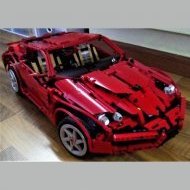
[MOC] Race/Trophy Truck (Not 100% LEGO)
By
PorkyMonster, in LEGO Technic, Mindstorms, Model Team and Scale Modeling
-
Recently Browsing 0 members
No registered users viewing this page.

By
PorkyMonster, in LEGO Technic, Mindstorms, Model Team and Scale Modeling
No registered users viewing this page.